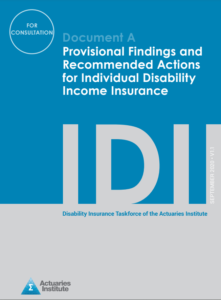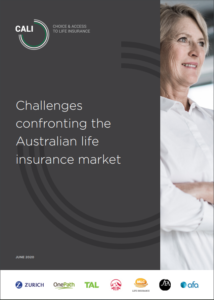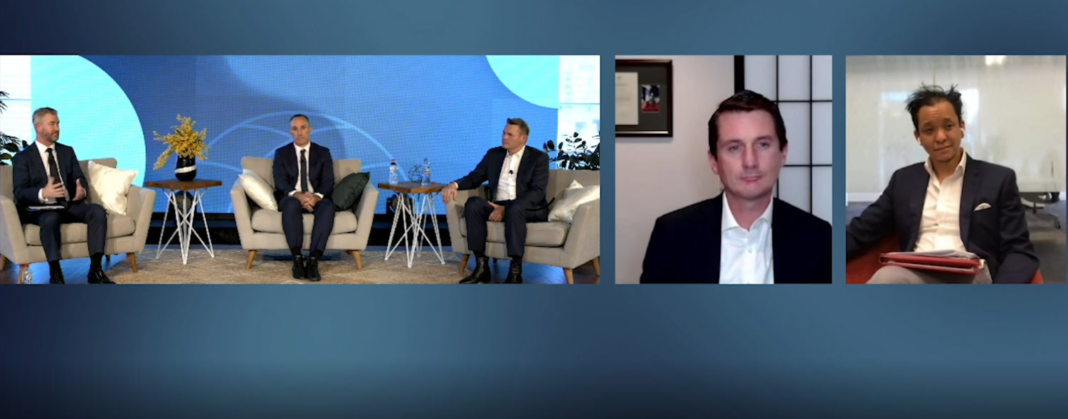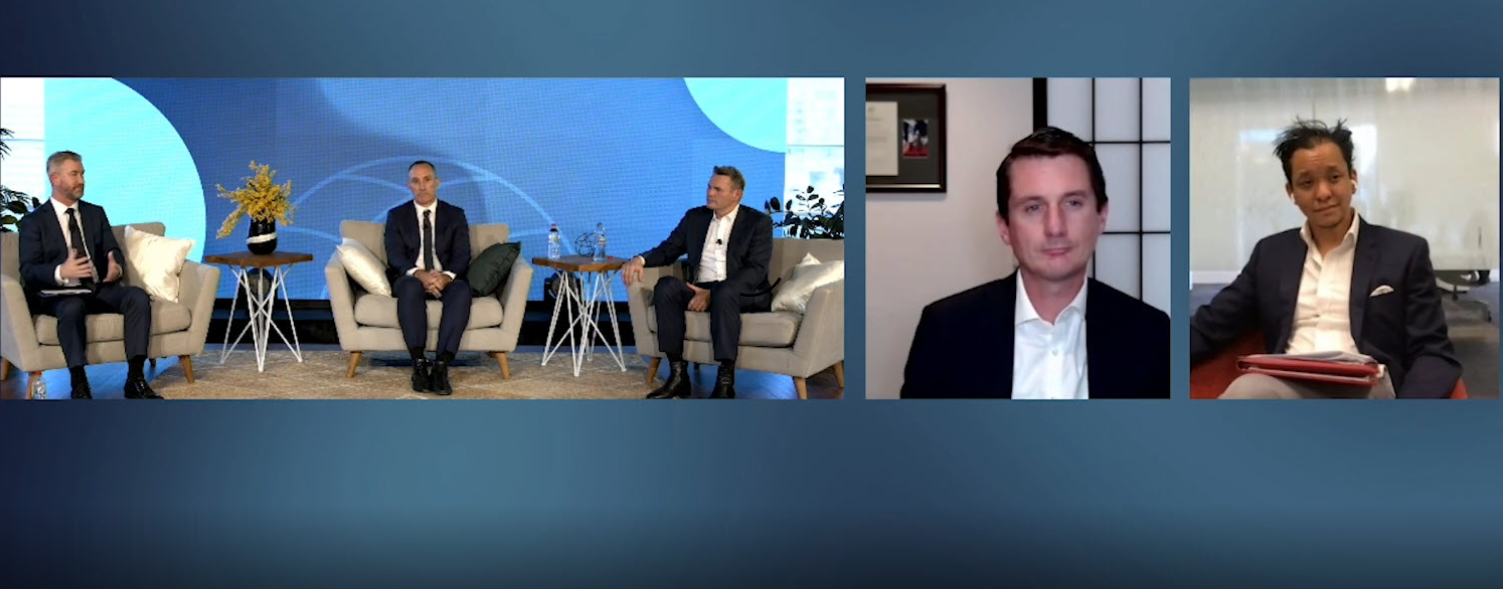Four life company chiefs addressed a range of critical issues impacting the life insurance sector during the recent AFA Vision 2020 Virtual Conference.
Some myths were dispelled in discussing a number of the key issues, all of which are pivotal to financial advisers and the life insurance advice sector, where the overall tone of the conversation between the four chiefs and AFA CEO Phil Kewin suggested that, while there exist competing interests across different industry stakeholders, there is more that unites us than divides us…
Product/industry sustainability
The fundamental issue of industry sustainability kicked off the conversation, which revolved around the future viability of income protection insurance and APRA’s recent intervention.
Asked how the industry arrived at the point where APRA has intervened in the individual IP market, TAL’s Group CEO and MD, Brett Clark, reflected that rather than a single issue there has existed a ‘complex array of issues’ that have brought the industry to the point of regulatory intervention.
He said those issues included product design and competitive factors, and the rise of mental health issues leading to pressure on claims levels.
In considering how the industry can work collectively to address these issues, Clark referenced the recent recommendations released by an Australian Actuaries Institute taskforce, which outlines a path towards a possible solution for the IP product sector.

Clark said this paper is the most thoughtful representation of all the issues impacting IP sustainability and how they inter-relate.
He also noted that lower interest rates on life company fund investments, while not highlighted as much, was also an important part of the overall sustainability equation. In noting claims experience was far and away the most critical component, Clark estimated 20 percent of the pricing increases that have occurred in IP products in recent years can be attributed to lower interest rate returns on life company statutory fund investments.
AIA Australia CEO Damien Mu agreed with the value of the Actuaries Institute taskforce findings in identifying the issues and opening a discussion about the solutions, noting that in his view, APRA was right to move when it did to help address the IP sustainability issue (see: APRA Cracks Whip…).
He said while insurers endeavour to offer an attractive proposition to consumers, there remains a disconnect on the part of the consumer with the life insurance message. He added that advisers have done a great job to address this disconnect but it persists.
Mu reflected that in addressing this persistent disconnect, it has led insurers to greater efforts to engage further, be relevant and to demonstrate more value. He says product innovation coupled with competition has seen the boundaries pushed, but conceded some innovations, under pressure from consumers and research house ratings, were not in the best interests of longer-term sustainability.
…there will be a proliferation of product launches into the market post APRA intervention
Zeroing in on how the APRA intervention on IP products will impact the market, MLC Life Insurance Chief Life Insurance Officer, Sean McCormack said the prescriptive nature of APRA’s IP guidelines is leading to a substantial re-set in product design, and he predicted there will be a proliferation of product launches into the market post APRA intervention.
“We can’t continue to go down the path we’ve been on,” commented McCormack, who noted competing life companies now have two reference points to which they can respond, namely the APRA intervention guidelines and the Actuaries Institute taskforce recommendations, as they embark on the journey towards what McCormack referred to as sustainable product design.
While he notes each product manufacturer will respond in its own way, he sees this as a positive, and that the industry will be the beneficiary of the competition between insurers as they launch their new IP product propositions. He added two areas in particular which would be a focus were replacement ratios (ie percentage of income insured benefit) and greater affordability.
Echoing each of his three colleagues and competitors, Zurich Australia CEO Life & Investments, Justin Delaney, agreed individual IP sustainability was a complex problem that’s evolved incrementally over time. He says we’re now on the cusp of change, however, which in turn offers a huge opportunity to change the paradigm for advisers, customers and life companies.
Delaney thinks one of the issues that has impacted the ability of insurers to change is the multitude of additional industry issues they and other stakeholders have needed to address, including implementation of the Life Insurance Framework and other regulatory reforms, as well as distribution and structural changes in the sector, where the nature of competition has revolved around features and pricing – which are two areas where insurers could drive what they could control.
He says APRA is telling insurers to provide products that offer premium certainty – confidence that premiums won’t change over time and that are viable from an insurer’s perspective.
To do that, according to Delaney, life companies need to frame the development of their products differently. He says product designers will now have more license to look at what the customer actually needs, rather than just compete on features and pricing.
Value of advice and role of risk advisers
…this period of change will dramatically increase the importance of advice
Brett Clark suggested it will be an interesting next 18 months as the companies bring their new individual IP products to market. But what it also means, says Clark, is that it will elevate the importance of advice. Rather than diminishing the role of advice as agreed value IP products disappear, he says this period of change will dramatically increase the importance of advice, because there’s going to be real differences in the market – real differences in the products available to consumers, together with the challenges for existing clients in weighing the benefits and risks associated with cancelling existing agreed value style contracts and moving to a new, more sustainable product offer.
Clark said there may emerge higher pricing on inforce products and lower but more sustainable pricing on new products, leading to a bigger role for advisers in establishing what’s best for their clients. He said this creates a great opportunity for different conversations with clients and prospective clients.
Uncertainty
The panel was also united in its uncertainty around some of the APRA ‘guidelines’ on IP products, especially the maximum five-year term to be applied to individual IP contracts.
Collectively the panel of chiefs was unsure about how this product edict will evolve. They said there was a need to address and avoid any moral hazards that may be associated with terminating an income protection insurance contract after five years and they were struggling to come to grips with how some elements of the five-year maximum term will work.
Sean McCormack said there were more questions from insurers than there are answers on the five-year term IP contracts at the moment, which the product manufacturers are trying to work through, such as what happens to a client half way through their five-year term on a level premium policy if their circumstances change and they need to enter into a new contract – what does that mean for the level premium basis and what happens after the end of the five years when more contemporary definitions are then available?
What’s in all our interests is a far more stable advised insurance market – especially as it relates to premium rate stability
He conceded IP Products have not stood the test of time well, and APRA’s intervention will hopefully act as a safeguard against these issues happening again: “What’s in all our interests is a far more stable advised insurance market – especially as it relates to premium rate stability – than we’ve seen over the last few years.”
Damien Mu noted “We’re all in agreement with each other” on the issue of needing to work to find a genuine long-term sustainability solution for income protection products.
He said that for the first time there is both a growing protection AND advice gap in Australia, which is not good for society – not good for Australians – and this must change. Contrary to views held by some stakeholders, Mu says there exists a greater need for advice now than ever before – and this extends to ongoing advice. As products such as five year maximum term IP will evolve and change, so will the need for ongoing advice as clients and families move through their life stages, says Mu.
Meanwhile, Clark noted the industry needs to learn the lessons of the past. “We don’t want to make the same mistakes again,” he said, reflecting that no-one – insurers, advisers or customers – has been a winner out of the current situation. “So, it’s important we learn those lessons.”
Delaney thinks there will continue to be pricing pressure on existing back books of business: “And that’s where the value of advice will be so important in exploring all the options available to …clients,” he said.
McCormack concurred, noting the first order issue is making sure there is a viable protection market in Australia, where part of achieving that outcome will be new product design and new, innovative thinking, which he hopes will lead to a far greater degree of premium rate stability – a greater degree of certainty.
Clark concedes that collectively, insurers have not made it easy for advisers to write life insurance business and that all product manufacturers need to do a better job of that. He said it’s incumbent on all insurers to make it easier, especially in future with the new products coming into the market – for advisers to manage their clients in changing products, if that’s the best outcome for the client.
Damien Mu agreed with Clark, adding that, because of this, insurers are going to need to work even more closely with advisers to deliver the best result for the client in the times ahead.
Industry structure
On the question of whether company consolidation within the life insurance sector has finally ‘settled down’, Damien Mu reflected that Australia remains an attractive and mature market because of the significant underlying customer protection needs that persist. He thinks there exists the possibility of further consolidation but also pointed out there are some new and emerging players who have entered into the sector, such as NEOS Life, Integrity Life, PPS Mutual and also the re-emergence of MetLife in recent years into the advised life insurance channel.
In noting the new owners of product manufacturing in Australia are all global multi-national specialist insurers (eg Dai-ichi Life, Zurich, Nippon Life, AIA Group), Delaney said the big change has been moving life insurance away from some companies which don’t have a historical and deep understanding of life insurance – companies which don’t necessarily appreciate the volatility that goes with life insurance or the impact on capital. He thinks these life insurance businesses now reside in a more natural home, which can be leveraged more from a global perspective.
Risk commissions and a united voice
With the LIF transition period completed, Kewin asked the panel whether the industry has ‘landed in the right spot’ for risk commissions and he also asked how well the industry is positioned for the 2021 ASIC review on the impact of the remuneration reforms on the quality of life insurance advice.
According to Mu, the issue of conflicted remuneration has been dealt with because commissions are now level across the board (ie across all insurers). “We do not need any more changes to remuneration models. We’ve gone through enough,” he said, adding that having now transitioned to the 60/20 model, the industry needs ‘a clear run at this model’ to make it work.

McCormack agreed. He says industry participants are far more united than ever before on the issue of retaining life insurance commissions, referencing the work of the CALI Group (Choice and Access to Life Insurance), which comprises the four insurance firms represented by the panel as well as the two main adviser associations. He says the group collectively supports access for all Australians to life insurance and the ability for consumers to choose how to pay for life insurance advice solutions.
He says CALI serves to support the fact that underinsurance is real. He noted the combination of factors such as the LIF reforms and the exit of advisers in recent years are contributing to a future where only wealthy Australians will be able to access advice: “We’ve had enough tinkering with commissions over the last few years,” he said.
…Australians won’t be willing to access life insurance advice if the only way they can pay for that advice is through a fee
In urging no further changes to risk commissions, McCormack said what’s really important is to demonstrate that Australians won’t be willing to access life insurance advice if the only way they can pay for that advice is through a fee. He says this is one of the findings the CALI group has reinforced.
Justin Delaney offered a thoughtful perspective as to why circumstances are different going into 2021 with regard to industry unity, compared with how the sector was shaped five and six years ago in the lead-up to the announcement and implementation of the LIF reforms. He said what’s changed since LIF was announced is that life insurance company ownership was divided in 2015 into those who were vertically integrated and those that weren’t. “That created a lot of tension between manufacturers,” said Delaney, adding this made alignment and trust across stakeholders quite difficult to achieve: “But there is now a much greater level of alignment in the industry than there was and CALI is an example of that,” he said, emphasising that the interests of insurers and the advice sector are much more mutually shared now, than they were in the past.
In terms of CALI and the impact of advice, Delaney said access to life insurance advice is more important than it has ever been. He said the big difference today is that there’s a much greater level of alignment across the industry.
…it is ‘complete and utter rubbish’ to suggest product manufacturers would prefer to focus on direct or group insurance channels.
In bringing an end to this particular topic of conversation, Brett Clark found a great way to encapsulate the fact that life companies support the advised life insurance channel and support the perpetuation of risk commissions. He told the panel it is ‘complete and utter rubbish’ to suggest product manufacturers would prefer to focus on direct or group insurance channels. He added the life insurance industry and the community “…needs a vibrant financial advice sector and within life insurance, commissions are a cornerstone of having a vibrant financial advice sector.”
Reiterating his position – and that shared by his fellow panellists, he stressed “…the idea that we are not behind the commission model in retail advised life insurance is just complete and utter nonsense.”
Noting that 75 – 80 percent of all individual life insurance sales made in Australia are through the retail advised channel, Clark questioned why anyone would think that insurers would want that sector to be smaller.
Conference attendees can watch or re-watch this virtual panel discussion until 12th February 2021 (click here).









After 6 years of absolute bedlam and unnecessary Government oversight, brought on by unscrupulous Players who saw an opportunity to screw down advisers to increase profits for vested interest groups, we have landed in a world that is many times worse than what we had back in 2014.
There is NO positives, it is all BAD for everyone except Lawyers, Regulators, Public Servants, Education providers and Auditors / Compliance entities, of which none of these entities actually produce anything, except more work, stress, cost and a reduced ability for Financial Planners and Life Risk specialists to do their jobs, which is, to look after their clients.
All Australians, the Life Insurers, Advice Practices and their staff have been hit for six with an end result, after all this disruption, of massive Life premium increases, zero certainty except for even higher premiums, higher lapses, thousands less advisers to look after clients and a weakening of benefits when Australians need the cover at their most vulnerable time.
This disaster can still be retrieved and it is so simple to fix, yet no-one in Government, the Regulators and even the Life Companies themselves have put forward a plan that makes any sense.
Myself and my son Brett have lobbied and will continue to lobby the Government and we have spent 7 years developing a Platform to bring about positive change.
We are close to launching and our goal is to bring about positive results so everyone in the long chain of Suppliers and Australian consumers, will be able to operate in a profitable manner that also enables Australians to get some security knowing their premiums will have stability.
Interesting to note the current insurers blame the banks for all the changes that halved upfront adviser commissions. If so, the banks have ruined the life industry and then when they couldn’t make bank type profit margins sold these companies and left!
Well said Jeremy. You’re opening sentence, in fact said it all. We ARE worse off today than 2014 – far worse in fact.
And you are spot on with one of the reasons too….parasite, ambulance chasing lawyers who now know advisers are almost certainly unable to keep up with the ever shifting regulatory environment many of us are seriously struggling to keep up with. If you look at many serious business issues now, the root cause is the parasite lawyers out there. Where its 5% of ‘bad’ advisers affecting the 95% of the good financial advisers still left, with lawyers its 90% ‘bad’ affecting the 10% ‘good’.
I have no optimism for the industry now to be honest. There are just too many self-interested people in Government, working for Regulators (who this week, quite ironically, have clearly shown they have not the ethics nor the integrity they say financial advisers MUST abide by) to make it so. The ‘speed-hump’ compliance nuts, who as you say – do nothing but stop other people from achieving what are trying to do for their clients are another reason. The negative attitudes to life and progress these people live by, must be so debilitating. They simply offer nothing.
I have always said that there is ample business out there for everyone in this industry in Australia to make an honest living out of by serving our clients admirably, honestly and with distinction. Unfortunately, humans (those that head up large financial institutions and industry superfunds specifically) are instead, infected with greed and DIS-honesty and that’s caused the ‘just-horrible snowball affect’ we all find ourselves in at the moment.
Comments are closed.